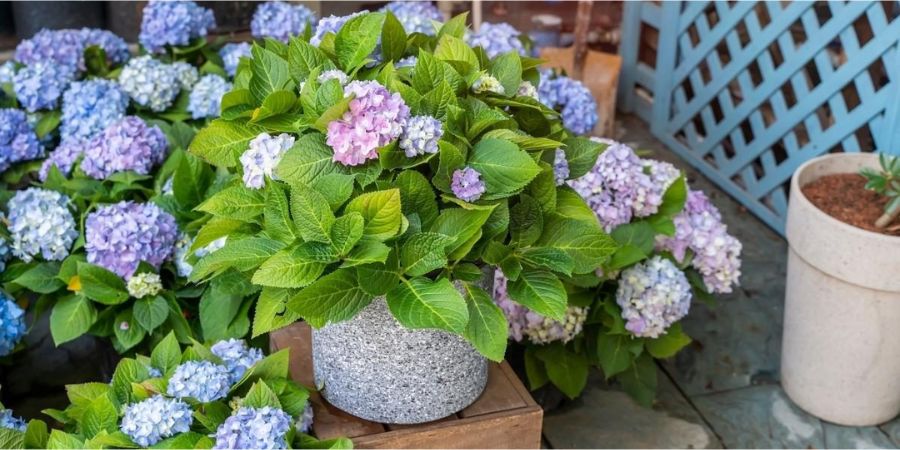How To Grow Hydrangeas: Tips And Techniques
Hydrangeas are beloved flowering shrubs that add a touch of elegance and beauty to gardens, landscapes, and even indoor spaces. With their stunning clusters of colorful blooms and lush foliage, it's no wonder why so many gardeners are drawn to these plants.
Whether you're a seasoned gardener or just starting out, growing hydrangeas can be a rewarding and satisfying experience. In this guide, we'll explore the process of growing hydrangeas, including how long they take to grow and how to propagate them from cuttings.
How Long Does It Take For Hydrangeas To Grow?
The growth rate of hydrangeas can vary depending on several factors, including the hydrangea variety, growing conditions, and care provided. Generally, hydrangeas can take a few years to reach their full size and produce abundant blooms. Here's a breakdown of the growth timeline:
- First Year: During the first year of planting, hydrangeas focus on establishing a strong root system and healthy growth. You might not see many flowers during this time, as the plant is directing its energy towards root development.
- Second Year: In the second year, you can expect to see more noticeable growth and possibly a few blooms, especially if you've provided proper care. However, the plant is still maturing and building its energy reserves.
- Third Year and Beyond: By the third year, your hydrangea should be well-established and starting to showcase its full potential. You can expect more prolific blooming and overall growth. Keep in mind that some larger hydrangea varieties might take a bit longer to fully mature.
Remember that regular maintenance and appropriate care play a significant role in promoting healthy growth and timely flowering. Providing the right conditions and following best practices will help your hydrangeas thrive and bloom to their maximum potential.
How To Grow Hydrangeas From Cuttings?
Propagating hydrangeas from cuttings can be a cost-effective and rewarding way to expand your collection. Here's a step-by-step guide on how to do it:
Materials You'll Need:
- Healthy hydrangea plant for taking cuttings
- Clean, sharp pruning shears
- Rooting hormone (optional)
- Small pots or containers
- Well-draining potting mix
- Clear plastic bags or plastic wrap
- Watering can or spray bottle
Steps:
1. Selecting a Healthy Parent Plant:
Choose a mature and healthy hydrangea plant from which you'll take cuttings. This parent plant should be disease-free and free from any signs of stress.
2. Taking Cuttings:
- Choose softwood or semi-hardwood cuttings, typically taken in late spring or early summer.
- Cut a 4-6 inch stem just below a leaf node (where leaves meet the stem).
- Remove the lower leaves, leaving only a few at the top.
3. Preparing the Cuttings:
- If using rooting hormone, dip the cut end of the stem in it, following the product's instructions.
- Plant the cut end in a pot with well-draining potting mix, burying at least one leaf node.
- Water the soil thoroughly.
4. Creating a Mini Greenhouse:
- Cover the potted cutting with a clear plastic bag or plastic wrap to create a humid environment.
- Place the pot in a bright, indirect light location. Avoid direct sunlight, as it can overheat the cutting.
5. Rooting and Transplanting:
- Keep an eye on the cutting's moisture level and mist it regularly to maintain humidity.
- In a few weeks to a couple of months, the cutting should develop roots.
- Once the roots are well-established, transplant the cutting into a larger pot or into the garden.
6. Caring for New Plants:
- Gradually acclimate the new plants to outdoor conditions if you plan to transplant them outdoors.
- Water regularly and provide appropriate sunlight based on the specific hydrangea variety.
Remember that not all cuttings will successfully root, so it's a good idea to take several cuttings to increase your chances of success. With patience and care, you can create new hydrangea plants that will bring beauty to your garden.
Conclusion
Growing hydrangeas can be a delightful endeavor that rewards you with spectacular blooms and vibrant foliage. While the growth timeline can vary, the patience you invest in these plants is well worth the outcome. Additionally, propagating hydrangeas from cuttings is an exciting way to expand your garden and share the beauty of these flowers with others. By following proper techniques and providing consistent care, you'll be well on your way to enjoying the charm and elegance of hydrangeas in your outdoor space.
RELATED ARTICLES:





